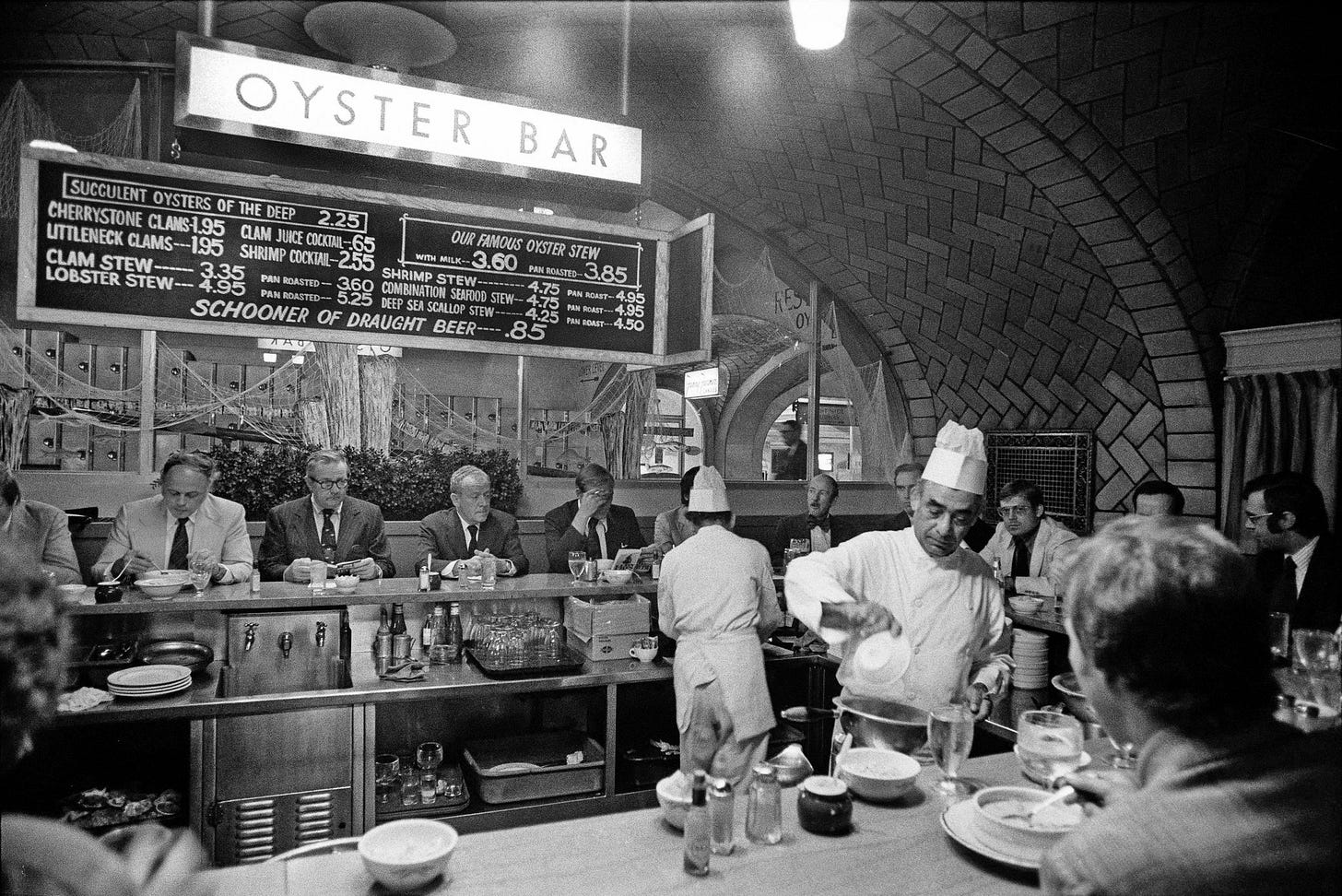Grand Central Station Oyster Bar
Some places are special. This is one of those. PS: Don't skip the video.
The Oyster Bar at Grand Central Station in New York is as old as the terminal itself. It opened as a 440 seater in February 1913, barely three weeks after the opening of the station. Back then, and for decades prior, oyster bars, stands, shacks and cellars were an obsession in New York. Also, the opening of the terminal came during the heyday of long-di…



